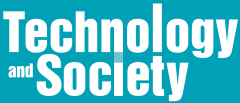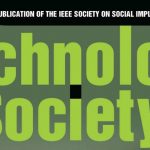How do we ensure that tools such as machine learning do not displace important social values? Evaluating the appropriateness of an algorithm requires understanding the domain space in which it will operate.



How do we ensure that tools such as machine learning do not displace important social values? Evaluating the appropriateness of an algorithm requires understanding the domain space in which it will operate.

As a community, we aim to develop and deploy practical technological solutions that are of benefit to individuals and society. With participation-based methods, we no longer prescribe solutions, but rather co-construct.

This month I will briefly discuss the work of the IEEE Humanitarian Activities Committee, which I have the honor to chair this year.

Technology has provided the source of intrinsically liberating devices, even if a number of them have proved themselves to be lethal. All this is precisely what defines the technological endeavors that constitute the backbone of our civilization.

The time of robotic deception is rapidly approaching. We are being bombarded regarding the inherent ethical dangers of the approaching robotics and AI revolution, but far less concern has been expressed about the potential for robots to deceive human beings.

Peter Buse, in his The Camera Does the Rest, stakes out different territory. His focus is on the social meaning of the Polaroid camera: how did it change photography? How were the cameras used? And how did Land intend them to be used — a concept that often differed from their actual use.

If digital technologies can be designed to maintain or sustain values, then the same technologies can be designed to manipulate or undermine those same values.

We define “good” technological ideas, as: sound technological designs, developed using participation-based methods, that seek to promote the beneficial uses of technology (through the harnessing of technological potential) while minimizing/potentially eliminating the undesirable effects on individuals and society. These approaches will ideally lead to the development and deployment of practical solutions that fulfill the need(s) of the intended end-user(s) and/or solve a given problem.

SSIT launches FutureProof, a refereed blog of concise, authoritative posts surfacing critical topics on the social implications of technology.

The aim of this special issue is to evaluate the social impact and social implications of new and emerging technologies on governance, politics, public administration, and policy-making, and to evaluate the future prospects of digital democracy, and its transformative potential for increasing public engagement, community empowerment, and social entrepreneurship.